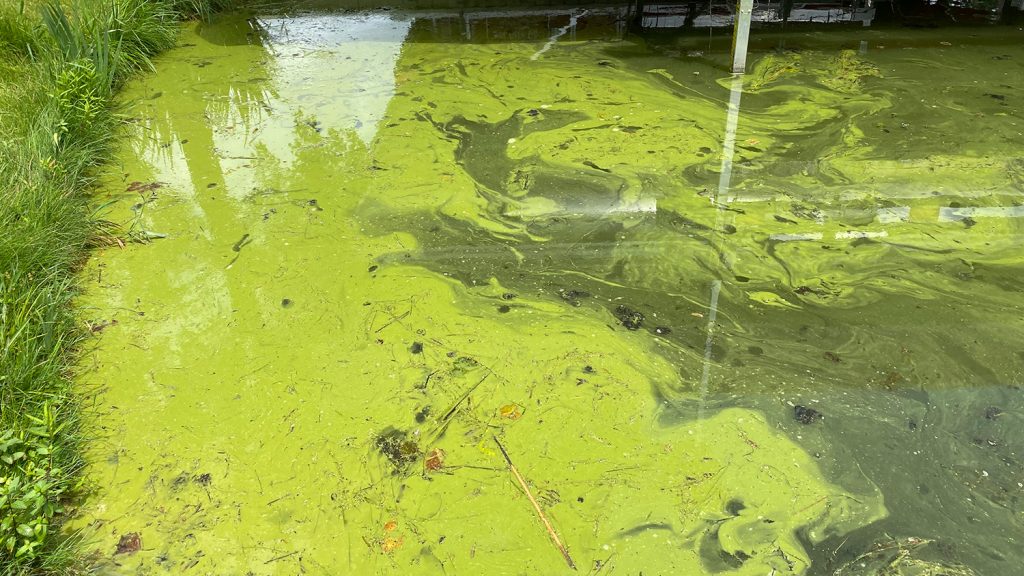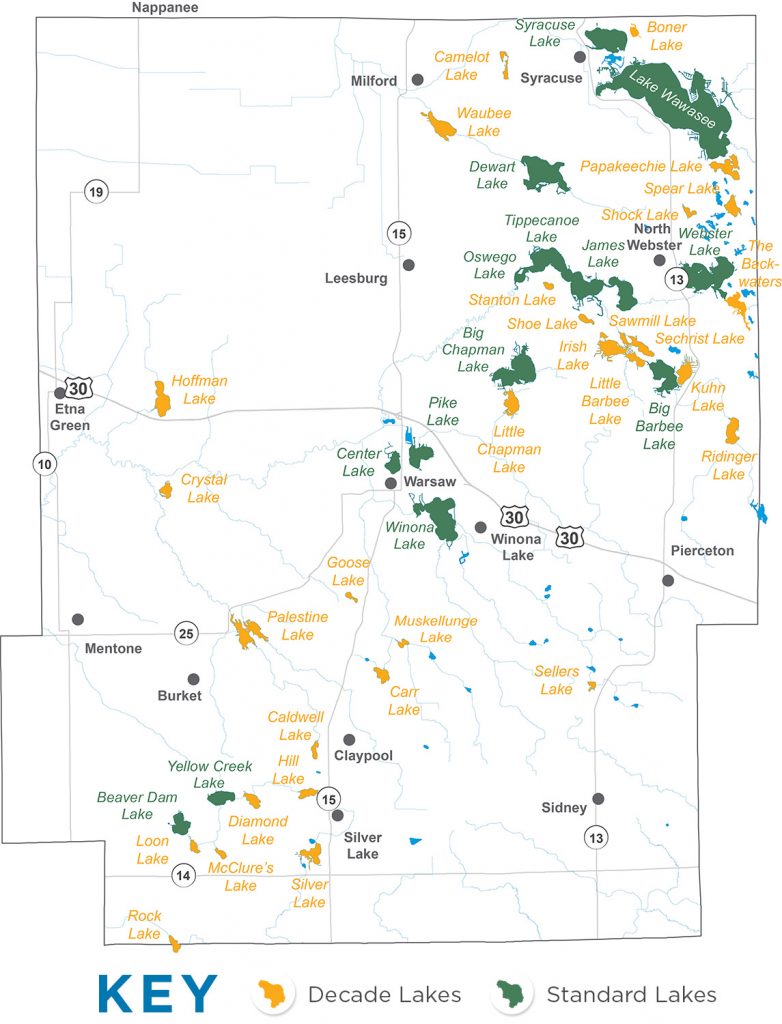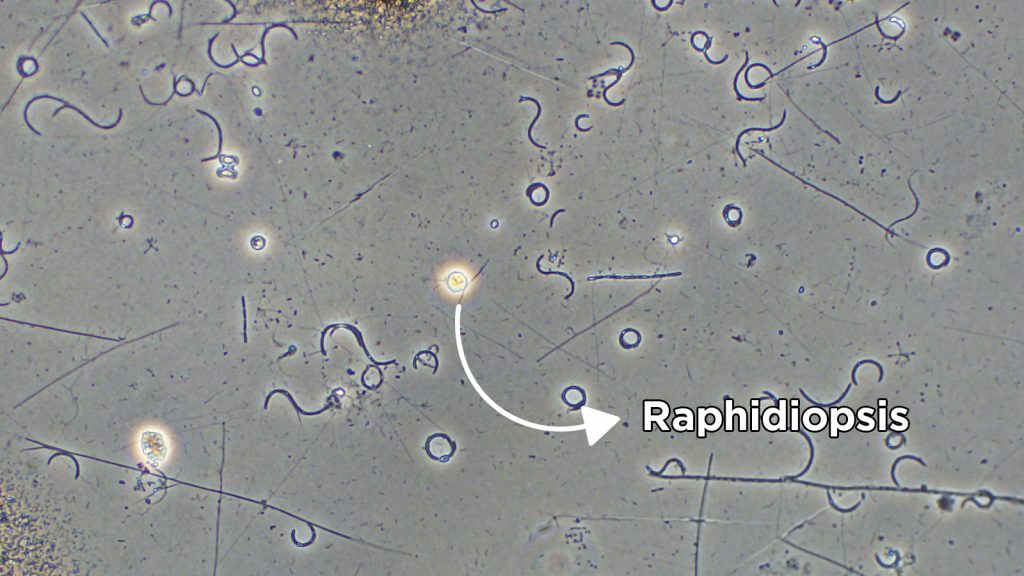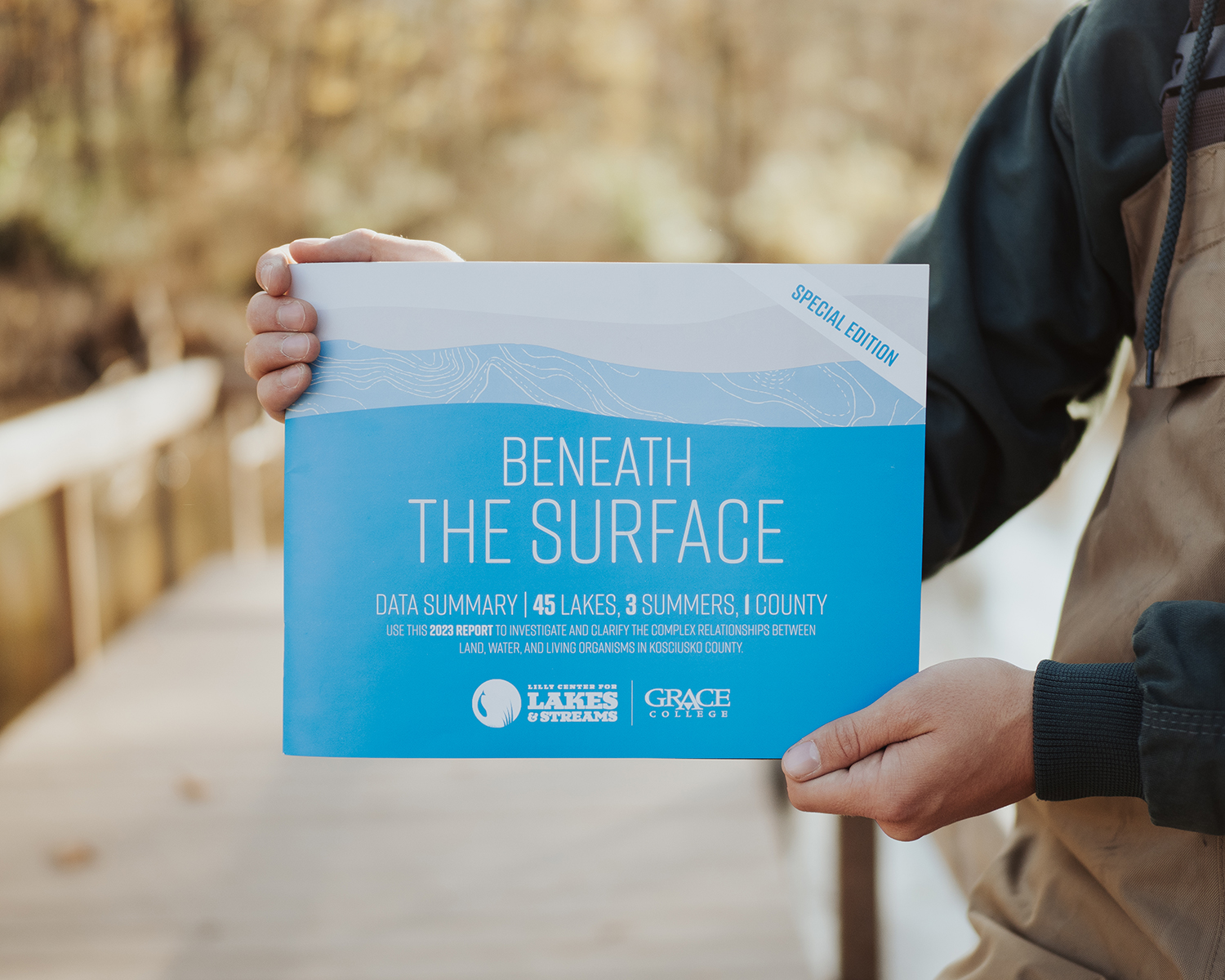How healthy are Kosciusko County’s lakes in 2023?
Just like we take our bodies to the doctor for a checkup, our lakes need checkups too!
Every summer since 2013, the Lilly Center has conducted research on 12 all-sport lakes in Kosciusko County, as well as Center Lake and Pike Lake. Taking water samples to study these major lakes allows us to see trends in our lakes’ health.
Kosciusko County is home to over 100 lakes, many with surrounding communities. In 2013, the Lilly Center conducted a short-term study of 45 county lakes to gain a broader perspective on the different watersheds in the county. That lake checkup helped focus our efforts where they were most needed.

ABOVE: An active blue-green algae bloom is often bright green and has a “pea soup” like appearance. Notify the Lilly Center if you spot a bloom and our staff will come and sample it.
Two years later, the Lilly Center specifically researched the presence of different toxins in 14 major lakes. Although several toxins were present, one deserved further research. Microcystin, a toxin produced by blue-green algae, can be present in quantities high enough to cause harm to pets.
“When we set up the toxin study in 2015, our goal was to identify which toxins were prevalent in our county,” explains Jed Harvey, Lilly Center research technician. “The research led us to focus our efforts on microcystin.”
"
The research led us to focus our efforts on microcystin.
— Jed Harvey, research technician
In 2023, 10 years after these initial studies, it is time for another checkup: a county-wide lake study! Our work this summer will marry our efforts from 2013 and 2015. According to Harvey, the research team will sample all 45 lakes again “to ensure that our research covers the toxin-related health hazards we could find in the county.”

In addition to microcystin, Harvey’s team will sample each lake for four toxins. These toxins are Anatoxin A, Cylindrospermopsin, Saxitoxin, and BMAA (beta-methylamino-L-alanine). Each of these toxins could be produced by any number of blue-green algae species.

ABOVE: Many species of cyanobacteria are capable of producing toxins; some toxins are even produced by several different species! Studying cyanobacteria species like Raphidiopsis is key to our research.
Assistant director of research at the Lilly Center, Matt Burlingame, explains how sampling for these toxins could make a difference. “If, for example, we see more Anatoxin A in our lakes, we can shift our focus and spend more time researching it,” he says.
As to what this county-wide study could reveal, Burlingame adds that “it’ll be interesting to see if the toxin ratios have changed in the past ten years. I’m also curious if there’s a correlation between microcystin levels in the 14 standard lakes and microcystin levels in the smaller lakes.”
"
It’ll be interesting to see if the toxin ratios have changed in the past ten years.
— Matt Burlingame, assistant director of research
Just like going to the doctor for preventive care can help keep our bodies healthy, this 45-lake study will guide the next ten years of research in an effort to preserve our lakes for future generations to enjoy. Stay tuned this fall for Beneath the Surface, an annual Lilly Center publication that will dive into the data we collect this summer.

Beneath the Surface is available now!
The results from this year’s sampling are now available in Beneath the Surface, an annual research publication. Data from the last three years contrasts with historical comparisons for 45 Kosciusko County lakes. Tap the button below to see how your lake measures up: